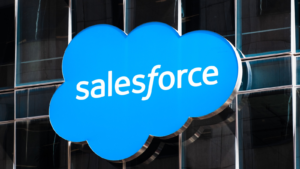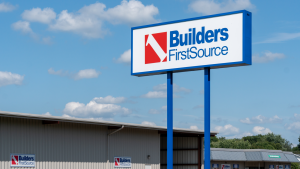INTU stock lost more than 8% on the day after it said its Q4 2024 EPS should be $1.83. That was at the midpoint of its guidance, and nine cents below the analyst estimates. Another possibility is the Internal Revenue Service’s free online tax preparation pilot. Due to the correction in late May, Intuit trades at its lowest level in seven months. Analysts remain positive about INTU stock, with 23 of 31 covering it rating it a Buy.
What other stocks have tumbled in recent days or weeks? Here are three S&P 500 stocks to buy on the dip.
Bath & Body Works (BBWI)

On June 4, Bath & Body Works (NYSE:BBWI) stock fell 13%. It is the only stock in the index that was down more than 10% on the day. BBWI fell because of weak Q2 2024 guidance despite reported first-quarter results that included a 15% increase in adjusted EPS, 38 cents compared to 33 cents a year earlier.
The long and short of it, BBWI expects a 2024 EPS of $3.20. This is at the midpoint of its guidance, down from $3.27 in 2023. Meanwhile, it expects revenues to be flat to -2.5% from $7.43 billion a year ago.
There are many examples of companies experiencing slower-than-normal sales and earnings right now. Lower interest rates will likely fix this temporary situation.
I just don’t see consumers permanently balking at the kind of products Bath & Body Works sells.
Salesforce (CRM)

Salesforce (NASDAQ:CRM) is down over 14% over the month. As a result, its year-to-date return is now in the red, down 7.65%. It lost nearly 20% on May 30 after missing analyst estimates in the latest quarter and providing disappointing guidance. Third Bridge analyst Charlie Miner said of CRM stock
“While Salesforce remains the undisputed leader in CRM and application software, its growth story, now driven by modest price hikes and drawn-out cross-sells, clashes with its desire to be viewed as an inspiring, nimble software leader ready to capitalize on a tremendous AI opportunity,”
Dan Ives, a Wedbush analyst, best known for his love of Apple (NASDAQ:AAPL), thinks investors have made a mountain out of a molehill. He recommended buying on weakness resulting from the earnings report. I couldn’t agree more.
As CEO Marc Benioff said in its Q1 2025 press release, its free cash flow grew by 43% over Q1 2024. It expects its operating cash flow in 2025 to increase by 22.5% at the midpoint of its guidance. Based on $10.23 billion in 2024 operating cash flow, it ought to generate $12.53 billion in 2025, with $11.65 billion in free cash flow.
For a company that should continue to deliver healthy growth in the years ahead, a 5.2% free cash flow yield is very reasonable.
Builders FirstSource (BLDR)

Builders FirstSource (NYSE:BLDR) is down 25% over the past month, making it the index’s worst performer over the past 30 days.
The distributor and manufacturer of building materials reported Q1 2024 results on May 7. It beat the analyst estimate for sales and earnings $3.89 billion, $80 million higher than the consensus. And, an EPS of $2.65 was 23 cents higher than the consensus. It was the 190 basis-point decline in gross margins to 33.4% that rattled investors.
The company’s biggest problem is the slowdown in multi-family residential. At the midpoint of its guidance, the company projects that multi-family will fall by 25% in 2024 €”fortunately, the multi-family market accounts for just 13% of its revenue.
The single-family and R&R (repair and remodel markets), which account for 71% and 16% of revenue, are expected to increase their starts by approximately 5% and 2%, respectively, in 2024.
With a projected free cash flow of $1.1 billion in 2024, its free cash flow yield of 5.1% suggests its shares are fair value and worthy of consideration.
On the date of publication, Will Ashworth did not have (either directly or indirectly) any positions in the securities mentioned in this article. The opinions expressed in this article are those of the writer, subject to the InvestorPlace.com Publishing Guidelines.
Will Ashworth has written about investments full-time since 2008. Publications where he’s appeared include InvestorPlace, The Motley Fool Canada, Investopedia, Kiplinger, and several others in both the U.S. and Canada. He particularly enjoys creating model portfolios that stand the test of time. He lives in Halifax, Nova Scotia.
